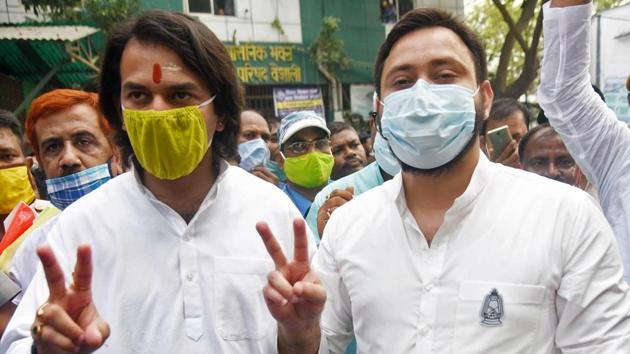The age factor behind Grand Alliance setback
Among candidates in age-groups 36-50 and 51-65, the NDA and the MGB candidates have a broadly similar strike rate (seats won as a share of seats contested).
The Rashtriya Janata Dal (RJD)-led Mahagathbandhan (MGB) failed to dislodge the National Democratic Alliance (NDA) from power in Bihar despite the two alliances ending up with almost identical vote shares — 37.23% for MGB and 37.26% for NDA.

An HT analysis based on data on candidate affidavits compiled by the election watchdog Association for Democratic Reforms shows that one of the reasons behind the MGB’s failure to grab power could be the challenge of demographic transition in its camp.
Click here for the full coverage of Bihar election 2020
While the middle-aged (in politics, not life) candidates of the NDA and the MGB performed almost at par, the MGB has a big deficit in comparison with the NDA among both older and younger candidates.
A comparison of strike rates brings this out clearly. Among candidates in age-groups 36-50 and 51-65, the NDA and the MGB candidates have a broadly similar strike rate (seats won as a share of seats contested). However, the NDA enjoys a significant strike-rate advantage among candidates up to 35 years old, or above 65 years of age.
To be sure, the alliance-wise figures hide significant party-wise differences.
The BJP has a 100% strike rate for candidates up to 35 years old, whereas this number was just 16.7% for the Congress and 43.8% for the RJD. Ironically, the RJD’s principal campaigner and driving force in these elections, Tejashwi Yadav, turned 31 on Monday.
BJP knows how to abide by the coalition dharma: Bhupender Yadav
The BJP’s strike rate is the highest among all major parties in all age-groups, except in the 51-65 category, where the three Left parties performed the best. The RJD has the worst strike rate among candidates who are older than 65, suggesting that contemporaries of Lalu Prasad might be finding it difficult to stay competitive in electoral politics. The RJD chief is 72.
An age-wise analysis of candidates fielded by political parties shows that the Left parties and the RJD had the biggest share of the young candidates in their camps — 17.2% of Left and 11.3% of RJD candidates were up to 35 years old.
However, their strike rates are lower than that of the BJP and JD(U). The Left also fielded the largest share of the oldest candidates in these elections, but have the worst strike rate in that category.
The share of candidates above 65 years of age fielded by the RJD was lower than the BJP and the JD(U).






